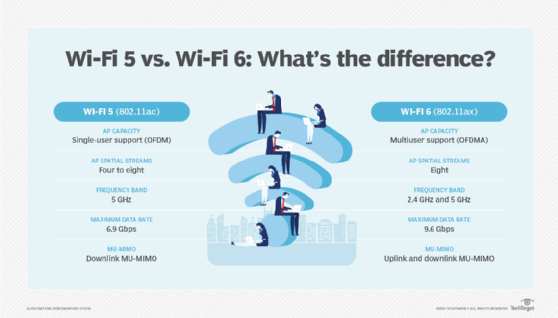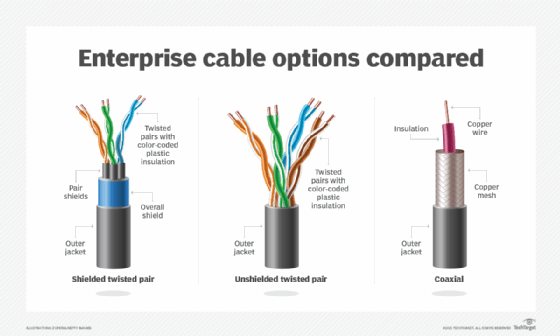electromagnetic interference (EMI) (original) (raw)
What is an electromagnetic interference?
Electromagnetic interference (EMI) is unwanted noise or interference in an electrical path or circuit caused by an outside source. It is also known as radio frequency interference. EMI can cause electronics to operate poorly, malfunction or stop working completely.
EMI can be caused by natural or human-made sources. Using high quality electronics, electrical shielding, and modern error correction can reduce the impact of EMI.
A common example of EMI is when a cellphone is placed near powered audio equipment or speakers, and it causes a noise or series of beeps to be heard.
What causes electromagnetic interference?
EMI occurs because of the close relationship between electricity and magnetism. All electrical flow produces a small magnetic field. Conversely, a moving magnetic field produces an electrical current. These principals allow electric motors and generators to work. Additionally, all electrical conductors can operate as radio antennas. High powered electrical and radio sources can produce unwanted effects in devices far away. As electronics become smaller, faster, more tightly packed and more sensitive, they become more susceptible to these effects, causing EMI.
The sources of EMI can be broadly split into two categories: naturally occurring and human-made.
There are some sources in the natural world that can produce powerful enough electric fields to affect electronic devices. Lightning can produce strong electrostatic discharges and magnetic pulses. Solar storms and solar flares emit highly charged particles that can cause problems with satellite and terrestrial communications. Cosmic radiation has been known to cause bitflips in electronics.
Human-made EMI can come from many places. High-power radio and electrical sources can cause unwanted EMI. Malfunctioning or improperly designed consumer devices can cause EMI in other devices. Using an electromagnetic pulse to intentionally induce EMI faults in victim devices is also a possible offensive action.
In EMI there is a source, a path and a receptor (or victim). There are several types of paths, or methods of transmission of EMI from the source to the receptor.
Radiated EMI happens when a high-power transmitter or electrical device produces a radio frequency that is picked up and causes unwanted effects in another device. If there is EMI and the source and receptor are far apart, then it is likely radiated EMI. Some examples of this would be a broken kitchen microwave causing a computer to reboot or old wireless telephones causing Wi-Fi to drop.
Radiated EMI can be subdivided into narrowband and broadband interference.
- Narrowband EMI only affects a specific radio frequency and is commonly from a radio transmitter.
- Broadband EMI affects a large portion of the radio spectrum at many frequencies and is commonly caused by malfunctioning equipment.

Wireless telephones causing Wi-Fi to drop is an example of radiated electromagnetic interference.
Conducted EMI happens when there is a physical electrical path from the source to the receptor. This is often along power transmission lines. Some sources may be a large motor or power supply. An example of conducted EMI is the turning on of a treadmill or clothes dryer causing a computer on the same electrical mains circuit to reboot.
Coupled EMI happens when the source and receptor are close together, but not electrically connected. Coupled EMI can be transmitted through induction or capacitance.
- Inducted or magnetically coupled EMI happens when a conductor’s magnetic field induces an unwanted current in a nearby conductor. An example of inducted EMI is when a power cable and an audio cable are near each other, and a hum is heard on the audio line.
- Capacitively coupled EMI happens when two conductors are parallel and store a capacitive charge between them. Capacitively coupled EMI requires the conductors to be very close together and is most common on electronic circuit boards or in groups of closely packed wires running long distances.
How to prevent EMI
The best way to prevent EMI is to use good quality electronics from reputable suppliers. In the United States, the FCC requires that all devices be tested against emission standards to prevent them from causing excessive EMI in other devices; similar rules exist in other countries. Poorly made, cheap or counterfeit electronics may not be properly tested or may not be EM shielded, making them more likely to cause EMI in other devices and more susceptible to EMI themselves. Modern error correction and filters can also reduce the effect of nearby EMI sources.
Accounting for EMI is important in high-speed networking. For wired networks, power lines should be separated from data lines. Shielded and twisted pair cables offer higher signal integrity. Fiber optic cable can also be substituted for copper cables as it is not susceptible to EMI. Wireless network planning may also need to account for the number and power of transmission sites, nearby radio sources and high-power transmission lines.

Using shielded and unshielded twist pair cabling help protect wired networks electromagnetic interference.
Medical devices may have legal requirements for EMI shielding and testing. It is also common for hospitals to require that cellphones be switched off to prevent them from causing EMI in sensitive equipment.
Consideration of EMI is important when designing electronics and circuit boards. This is especially true in modern high-speed devices. Board designers must account for component location and routing. They may also include metal shielding cans or conductive tape to block EMI from affecting sensitive components.
In highly sensitive situations, a Faraday cage may be used to shield a device or room from outside EMI. Radio telescopes are often constructed in isolated areas away from population centers to reduce EMI.
See wireless network configuration basics: 5 steps to follow, an overview of network management tasks and best practices, different types of configuration tools for network change management and how to troubleshoot wireless network connection problems in 10 steps.
This was last updated in March 2022
Continue Reading About electromagnetic interference (EMI)
- Where the new high-speed interfaces fit and how they work together
- A brief index of network configuration basics
- How to set up a new business network
- What the future of edge computing means for cloud and networks
- Enterprise 5G: Guide to planning, architecture and benefits
 What is EM shielding (electromagnetic shielding)?
What is EM shielding (electromagnetic shielding)?  By: Robert Sheldon
By: Robert Sheldon  The pros and cons of optical wireless communication
The pros and cons of optical wireless communication  By: Venus Kohli
By: Venus Kohli  HDMI (High-Definition Multimedia Interface)
HDMI (High-Definition Multimedia Interface)  By: Pat Brans
By: Pat Brans  coaxial cable
coaxial cable  By: Eamon Earls
By: Eamon Earls